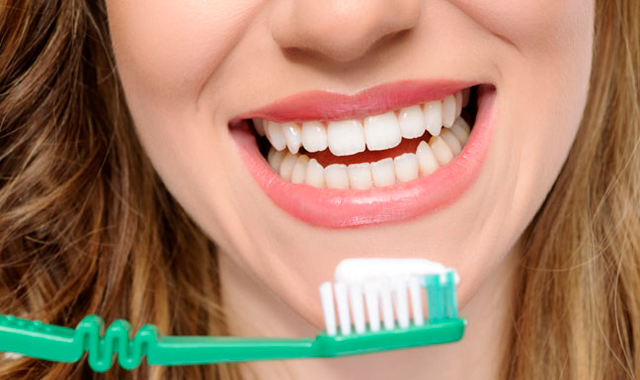Study shows toothpaste alone doesn’t protect enamel or prevent erosion
A team of researchers analyzed nine toothpastes on the market that claimed to have desensitizing or anti-erosive properties.

While toothpaste is critical in the fight against plaque buildup, the simple act of brushing your teeth can cause some enamel erosion. However, more toothpastes are coming on the market that claim to protect tooth enamel, decrease sensitivity and prevent erosion.
Are these claims to be trusted? Maybe not, according to new research.
A study conducted at the University of Bern in Switzerland with the participation of a researcher supported by a scholarship from the São Paulo Research Foundation investigated the effect of different desensitizing and/or anti-erosive toothpastes on initial enamel erosion and abrasion and how the interplay of their chemical and physical factors influenced erosive tooth wear.
Related reading: Are activated charcoal oral care products safe to use?
The researchers prepared 150 enamel specimens from sound human premolar surfaces that were obtained from a pooled bio-bank. The specimens were randomly distributed into 10 groups and were submitted to five erosion-abrasion cycles using nine different toothpastes and an artificial saliva group. Enamel surface loss was then calculated.
The team discovered that all groups showed progressive enamel surface loss throughout the experiment. After five cycles, the toothpastes began to present different amounts of surface loss. According to the study, among the desensitizing toothpastes, Sensodyne Repair and Protect showed a numerically lower enamel surface loss value, but it was not different from both control groups. Blend-a-Med Pro Expert showed the highest enamel surface loss.
As for the toothpastes that claimed to have anti-erosive properties, the researchers determined that Sensodyne Pronamel and Elmex Erosion Protection presented the lowest values, not different from the control group and with no difference between them. Regenerate showed the highest enamel surface loss values, which weren’t different from Blend-a-Med Pro Expert.

“We can conclude from this study that enamel surface loss occurred to different extents, regardless of the claim of the toothpastes (desensitizing and/or anti-erosive),” the researchers wrote. “Although some of the toothpastes showed lower surface loss, none of them was able to fully protect the enamel against ETW (erosive tooth wear). From the chemical and physical factors analyzed in the toothpaste slurries, only pH and fluoride were not significantly associated to surface loss.”
While none of the toothpastes in the study were shown to prevent enamel erosion, late last year, Crest Pro-Health Advanced, Deep Clean Mint was the first product to earn the American Dental Association Seal of Acceptance in the enamel erosion category. When asked about this recent study, the ADA replied, “To earn the ADA Seal of Acceptance in this category, safety and effectiveness must be demonstrated via two independent clinical studies assessing the product’s ability to prevent or reduce enamel erosion from dietary acids. The ADA supports additional research on dental erosion. Patients should talk to their dentist about what dental products will work best for their specific needs.”
More from the author: The risks and rewards of mail-order braces
The researchers noted that a limitation of the study was the fact that the chemical and physical factors of the toothpastes were analyzed in an in vitro model, using artificial saliva for specimen incubation and for the preparation of the toothpaste slurries. Because of this, a dilution factor was introduced to the toothpastes as well as other ion-components that would interact with the ingredients from the toothpastes.
“We’re now working on other studies relating to dentin in order to think about possibilities, given that none of these toothpastes was found capable of preventing dental erosion or dentin hypersensitivity, which is a cause of concern,” says Ana Cecília Corrêa Aranha, a professor and co-author of the study.
The full study, “Chemical and physical factors of desensitizing and/or anti-erosive toothpastes associated with lower erosive tooth wear,” appeared in Scientific Reports, an online multidisciplinary, open access journal from the publishers of Nature.